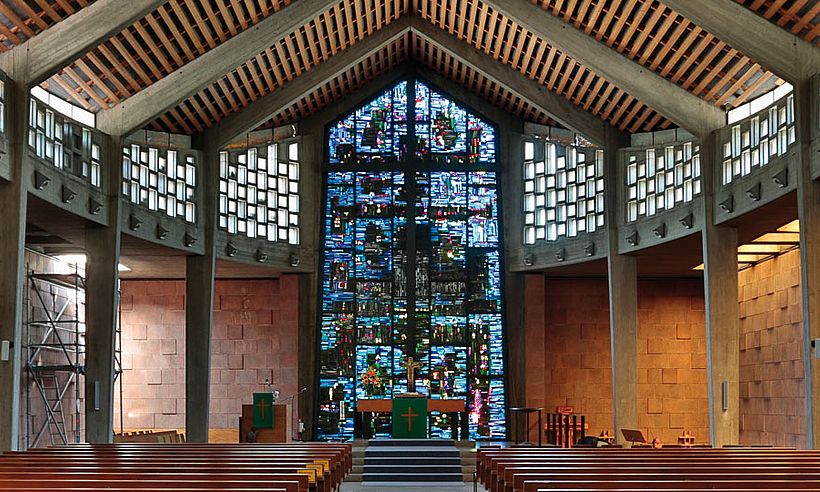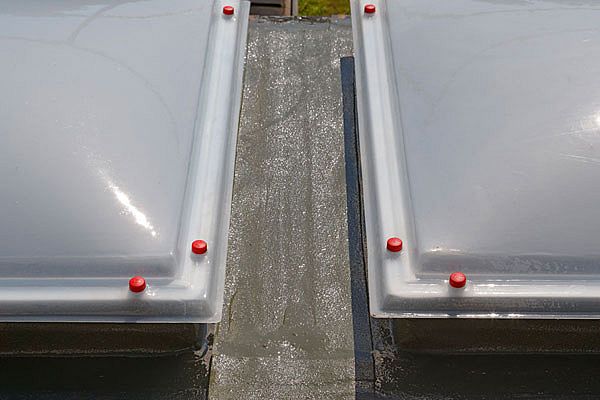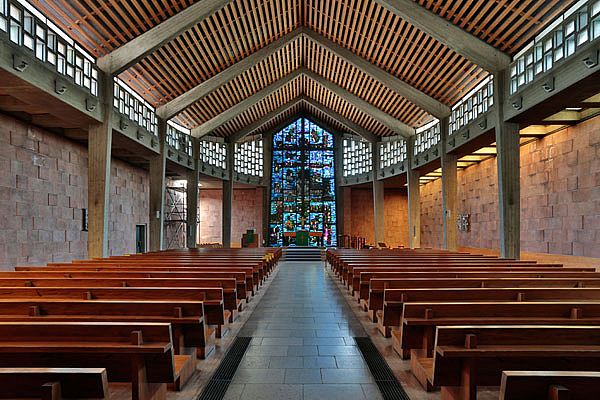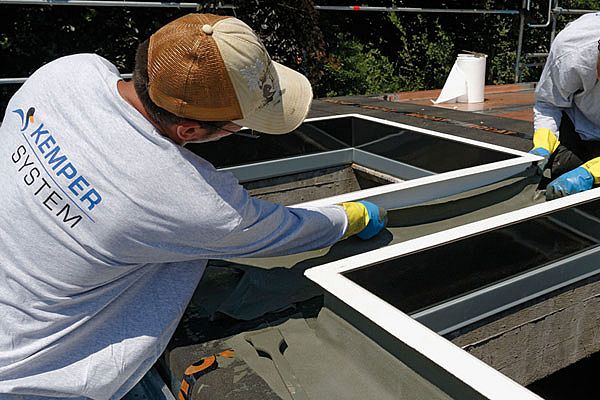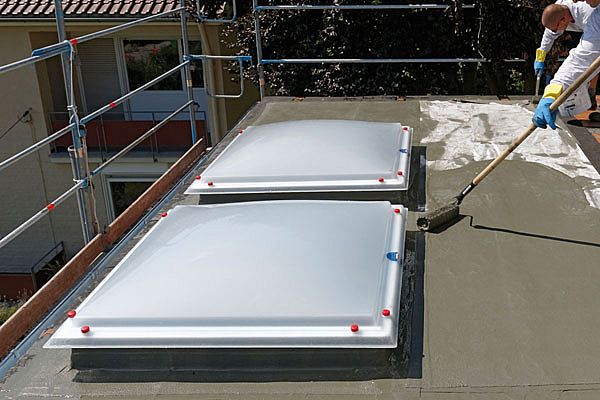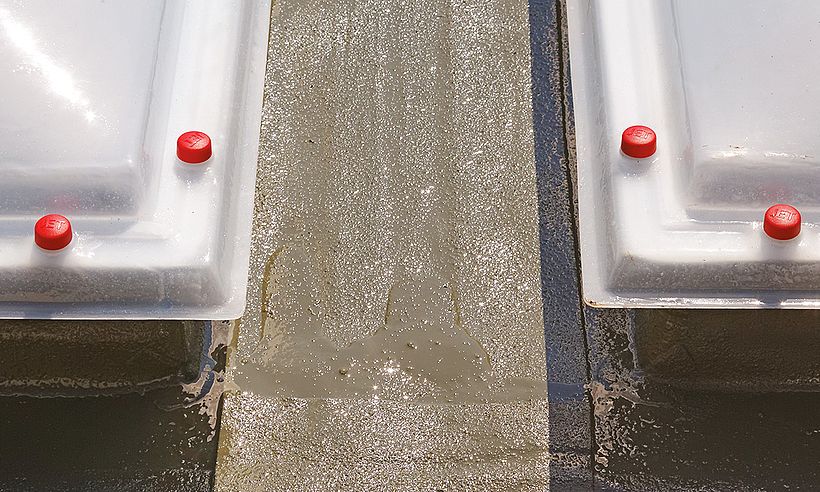KEMPEROL FALLSTOP: Let there be light – but with more safety!
Forty-four skylight domes positioned at approx. 40 cm intervals on a roof measuring just 200 m² – this was the almost ideal-typical scenario for liquid applied waterproofing on the roof of the St. Thomas’ Church in Karlsruhe, Germany. Since all 44 skylight domes had to be replaced, Strippel Bedachungs GmbH used this opportunity to use KEMPEROL products not only for waterproofing but also to enhance safety. KEMPEROL FALLSTOP was chosen to ensure site safety and to prevent occupational injuries. The installers applied the transparent material on the new skylight domes to guarantee fall-through protection. The product has been tested to GS BAU 18.
Historic ecclesiastical architecture
The St. Thomas’ Church in Karlsruhe Daxlanden, constructed between 1958 and 1960, was designed by Otto Bartning, who is regarded as one of the most prominent Protestant church architects of the 20th century. Today, St. Thomas’ Church is listed as a building of special historical interest. The bell tower next to the entrance towers over a plain three-nave, basilican structure with seating for 600 worshippers. A striking feature is the visible combination of various materials, such as concrete, steel, glass, timber, natural stone and brick. Based on the model of a basilica, Otto Bartning equipped the church with a higher central nave and two very narrow side aisles. The steep-roofed central nave is limited by two symmetrical side aisles whose concrete roof construction is designed as a flat roof. To allow sufficient light to enter the room below, the roof surface boasts a total of 44 skylight domes (22 on each side). The distance between the individual light openings is just approx. 40 cm.
Solution for protecting buildings of historical interest
The old structure above the concrete ceiling – perforated sheeting, 5 cm cork insulation, several layers of bitumen, glass fibre skylight domes without a base – was completely removed. Since the church is a listed building, the question arose as to how fall-through protection of the skylight domes could be achieved. Railings were out of the question for the preservationists. To ensure full use of the church rooms and to allow sufficient light to enter the building, net and mesh solutions were also not an option. The architect Leonhard Creutz, commissioned by the Protestant Church Office, and the master roofer Tino Schlimpert from the contracted roofing company came up with the idea of applying UV and weather resistant KEMPEROL FALLSTOP to the skylight domes, thus also eliminating the need to erect scaffolding in the church naves when carrying out roof maintenance. The church leaders and the pastor needed very little convincing. Measurements showed that the bluish transparent surfacing only reduced the level of light transmission by approx. 4.5%. A value that cannot be detected with the naked eye and does not result in opacity in the rooms below. A solution that also met with the approval of preservationists.
Tested fall-through protection
KEMPEROL FALLSTOP is the name of the surfacing system which ensures tested fall-through protection in accordance with GS BAU 18. Skylight domes can therefore be quickly and simply secured at a later date to prevent potentially fatal accidents caused by falling through skylights. In line with statutory regulations, skylight domes must also be permanently secured against falls if they are installed on roofs which are regularly accessed. This also includes maintenance work. The ready-to-use, polyethurane-based surfacing is a user-friendly, quick and cost-effective way to secure skylight domes. Subsequent safety measures can be taken during operation. Rooms do not have to be closed off. Since the skylight domes – a special design with base – were newly installed, they were surfaced in advance at the new company workshop currently under construction and delivered on the roof ready for assembly.
Seamless protection
After installing the skylight domes, the roof was waterproofed with KEMPEROL 2K-PUR. The solvent-free and odourless product can be used in every environment without restrictions. A material characteristic that was welcomed due to the adjacent nursery. First, a self-adhesive moisture barrier was applied to the concrete substrate, followed by 6 cm thick layer of polyurethane insulation. A sanded cold self-adhesive membrane was used as the separating layer upon which KEMPEROL 2K-PUR was laid directly without a primer. Since the waterproofing is applied as a liquid, it adapts to any substrate shape. Even narrow surfaces, joints and penetrations can be waterproofed without any weak points. Safe and seamless protection.


